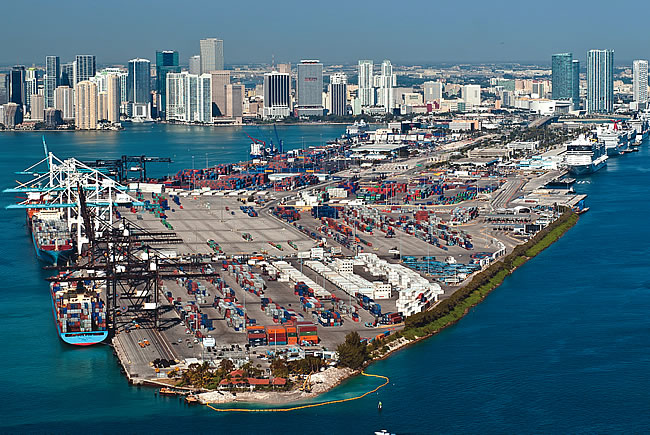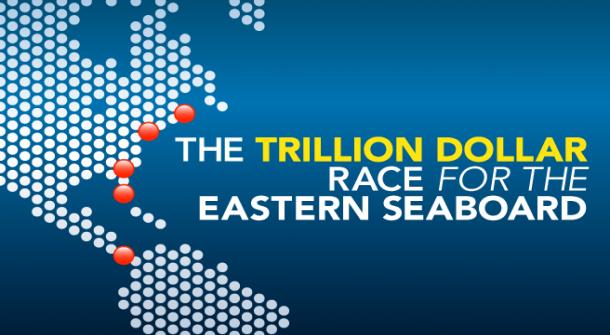The expansion of the Panama Canal continues to impact the eastern seaboard of the United States and now this legislation will ease the way for the numerous ports to speed up the improvements needed to accept larger container vessels.
WASHINGTON — House and Senate negotiators reached agreement on a bill that would authorize deepening several U.S. ports ahead of the expansion of the Panama Canal and the bigger ships that will use it.
The bill — the first such measure in seven years — will include language that would let ports pay the costs of deepening harbors up front, then seek reimbursement from the government once the project is authorized by lawmakers. That could help facilities that sought the provision, such as Port Everglades in South Florida, reduce construction time by years.
“That’s a big part of this bill,” House Transportation Committee Chairman Bill Shuster, R-Penn., said in an interview. “They’ve got money ready to go.”
The Water Resources Reform and Development Act, H.R. 3080, is seen as one of the few examples of bipartisan action in a polarized Congress that’s on pace to become the least productive in history in terms of bills passed.
The full legislation probably won’t be released until next week, Shuster and his Senate Democratic counterpart, Barbara Boxer of California, said in a joint statement.
The Senate-passed version would have authorized money to take action in response to rising sea levels or increased ocean temperatures resulting from global warming. House Republicans who have resisted new spending linked to climate change rejected that provision.
Even so, Senate Majority Leader Harry Reid, D-Nev., said the agreement contains language about the effect of global warming on sea levels and ocean temperatures. The final sticking point in the talks was over a proposed National Endowment for Oceans that Shuster said was dropped.
The largest navigation project included in both the House and Senate-passed measures would deepen the Sabine-Neches Waterway, which connects the oil-refining hub of Beaumont and Port Arthur, Texas, with the Gulf of Mexico.
The Port Arthur area is home to the southern end of the Keystone XL pipeline. Deepening the port will reducing shipping costs for oil and natural gas processed there by Exxon Mobil, Total and Cheniere Energy.
That deepening project was included in the final bill, Shuster said, along with more than two dozen others. For Port Evergalades the measure could bring as much as $181 million.
Also authorized, Shuster said, are storm and flood prevention projects, including the Morganza to the Gulf levee system sought by lawmakers in storm-battered Louisiana and a diversion channel for the Red River of the North that would reduce flood risks in Fargo, the largest city in North Dakota.
The final language will be released next week, negotiators said in a joint statement. The House could take up the bill as early as the week of May 19.
What Panama Canal’s Expansion means for Eastern ports
What Panamanian citizens may not realize is that when they approved the Panama Canal Extension project in 2007, it sent a shockwave through every seaport in the United States, particularly those on the East Coast that were designed specifically to adhere to “Panamax” regulations. The Panama Canal expansion is a microcosm for the entire U.S. seaport system because the ports that will stay competitive in global trade markets are the same ones that need to modernize their sea terminals to accommodate the larger ships that will be traveling through the Panama Canal in 2014 when the extension is complete. Three years doesn’t leave much time for seaports to complete massive infrastructure projects, which is why most have already started dredging deeper ports to make way for the supersized ships.
The Panama Canal extension is “going to almost triple the size of vessels that are going to be able to transit the canal,” Kurt J. Nagle, president of the American Association of Port Authorities said in a recent interview. “I don’t think it’s over-hyped to say it’s a game Panamax” where the maximum size of a ship that can pass is 1,200 feet long by 160 feet wide, opposed to the current standard of 956 feet long by 106 feet wide. The container capacity of ships will swell to 12,000 TEU from 5,000. TEU or twenty-foot-equivalent describes the volume of the total intermodal containers that are being transported. The maximum draft of vessels travelling to and from the U.S. East Coast will increase to as much as 50 feet from 39.5 feet.
ECONOMIC LIFELINES
Seaports are economic lifelines that grow international trade and strengthen local and national economies alike. Now that the Panama Canal is positioned to begin accepting the larger ships in 2014, the burden of upgrading port infrastructures shifts to the East Coast, where their race has intensified in recent months. The first Port Authority to prove that its port can meet New Panamax requirements will have a substantial advantage over its competitors. The potential is limitless from an economic standpoint because the favored port could ultimately become the epicenter for U.S. international trade in the New Panamax Era.
It’s worth noting that a port will be judged as much by its sea terminals as it is the supporting infrastructure around the terminal, i.e. roads, highways, waterways and rail systems. The importance of supply chain infrastructure cannot be understated. U.S. seaports actively generate $3 trillion in economic activity annually and support more than 13 million American jobs. Additionally, President Barack Obama’s call to double exports by 2025 is paramount because every $1 billion in exports creates 15,000 American jobs, according to the AAPA. The seaports that look at Obama’s $50 billion infrastructure budget as a potential source for monetary assistance should look elsewhere because the Commander-in-chief has already devoted most of the infrastructure budget to fixing dealing with passenger-related travel issues.
Here’s an overview of where the seaport projects on the eastern seaboard currently stand:
- The Port of New York/New Jersey, which is the busiest port on the eastern seaboard and second only to the Port of Los Angeles, already has a $2.3 billion project under way to deepen its harbor to 50 feet. However, the Bayonne Bridge spanning the shipping channel is too low for the biggest ships, and port officials say at least $1.3 billion more is needed to raise that span.
- The Port of Baltimore is nearly two years ahead of the 2014 deadline as workers are set to complete a $105 million project by July 2012 to accommodate supersize vessels within a new 200-acre terminal. It is a part of a greater infrastructure project totaling $1.3 billion in the Baltimore-area.
- The Port of Savannah sought $105 million from Obama’s infrastructure budget to begin dredging a deeper shipping terminal, but was rewarded with only $600,000. The Georgia Ports Authority has made the argument that a deeper port in Savannah, the second-busiest port on the East Coast, was necessary to meet Obama’s goal of doubling U.S. imports.
- The Port of Miami already has permission to dredge and is asking for $75 million to start the project’s first phase. Studies are also under way to deepen two other Florida ports in Ft. Lauderdale and Jacksonville
To the victor go the spoils.

